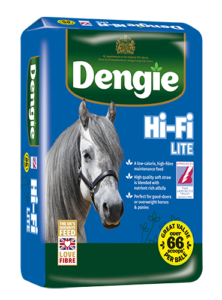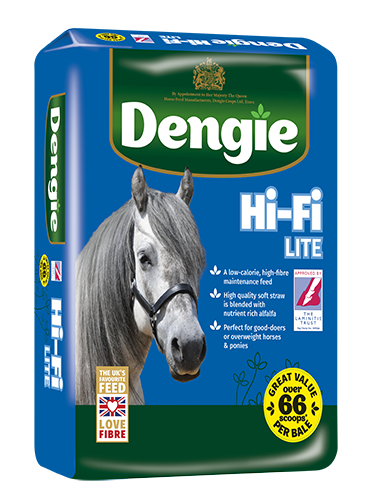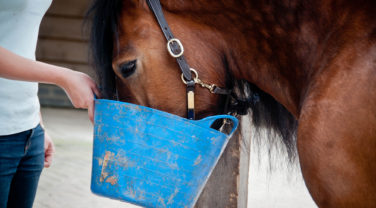What forage should I feed my laminitis prone horse or pony?
Conserved forage, such as hay and haylage , is the cornerstone of the laminitis prone horse’s diet; as they typically spend longer periods stabled, or in a no-grass area. When it comes to food for laminitic horses, people often think about the bucket feed first. However, as it forms such a large part of the diet, it is just as important to ensure that the forage is appropriate.
What’s more suitable, hay or haylage for laminitics?
This isn’t an easy question to answer. The current advice is that the best hay or haylage for laminitics is one with less than 10% non-structural carbohydrate (NSC), which is the sum of water-soluble carbohydrate and starch added together on a dry matter basis. How much NSC a forage contains is impossible to predict and is hugely variably according to the types of grasses, age at harvest, and environmental conditions during growth and at harvest. The key piece of advice when purchasing a forage is therefore to ask for an analysis, or get the forage tested if an analysis isn’t available. If well made, the NSC of haylage can be lower than hay, but this isn’t always the case.
When it comes to hay or haylage for laminitics, another factor to consider is your horse’s weight. Traditionally, haylage was cut earlier than hay, meaning that the grasses were more digestible. For good do-ers prone to weight gain, haylage was less useful for managing their waistlines and so hay was more frequently recommended. Today there are a number of commercial haylages available that are higher in fibre and lower calorie, making them more suitable for the good do-er and those that are laminitis prone; providing they are low NSC. These can be particularly useful when hay quality is poor, or for horses that additionally have respiratory issues.
Some sources have advised against using haylage for laminitis prone individuals, but the scientific evidence to date has been inconclusive. One study found a higher insulin response to haylage compared to dry and soaked hay. High circulating levels of insulin in the blood are of concern as it is thought to link to laminitis. However, the NSC of the haylage used in this study was higher than the hay which would explain these results; rather than simply being an effect of consuming haylage. Another study compared haylage with varying levels of NSC and found that the impact of insulin sensitivity was diminished when NSC was low. Whatever your forage choice, they key message remains: get it tested and select forages with low levels of NSC for laminitis prone individuals.

What about forage replacers?

Another alternative to traditional long stemmed forages is to use a short chop hay replacer, which can be deemed one of the best forage based horse feeds for those with laminitis. This can be useful when the nutritional content of the forage is unknown, forage is in short supply, or when the horse struggles to chew long-stem fibres. Dengie Hi-Fi Lite can be used as a total forage replacement. Combining chopped alfalfa and straw with a light molasses coating, Hi-Fi Lite provides just 7.5MJ/kg digestible energy, 7% sugar and 1.5% starch. Hi-Fi Molasses Free can be used to partially replace the forage ration, up to 1kg per 100kg of your horse’s bodyweight daily, and provides 8.5MJ/kg DE, 2.5% sugar and 1.5% starch.
At Dengie, we pride ourselves on offering some of the best high fibre feeds for horses with laminitis. If you’re looking for information or advice on the best hay or haylage for your laminitic , please contact the Dengie Feedline on 01621 841188 or fill out the feed advice form.
References
Carslake, H.B. Argo, C.McG. Pinchbeck, G.L. Dugdale, A.H.A. McGowan, C.M. (2018) Insulinaemic and glycaemic responses to three forages in ponies. The Veterinary Journal, 235, pp. 83-89.
Lindåse, S. Müller, C. Nostell, K. Bröjer, J. Evaluation of glucose and insulin response to haylage diets with different content to nonstructural carbohydrate in 2 breeds of horses. Domestic Animal Endocrinology, 64, pp. 49-58.



